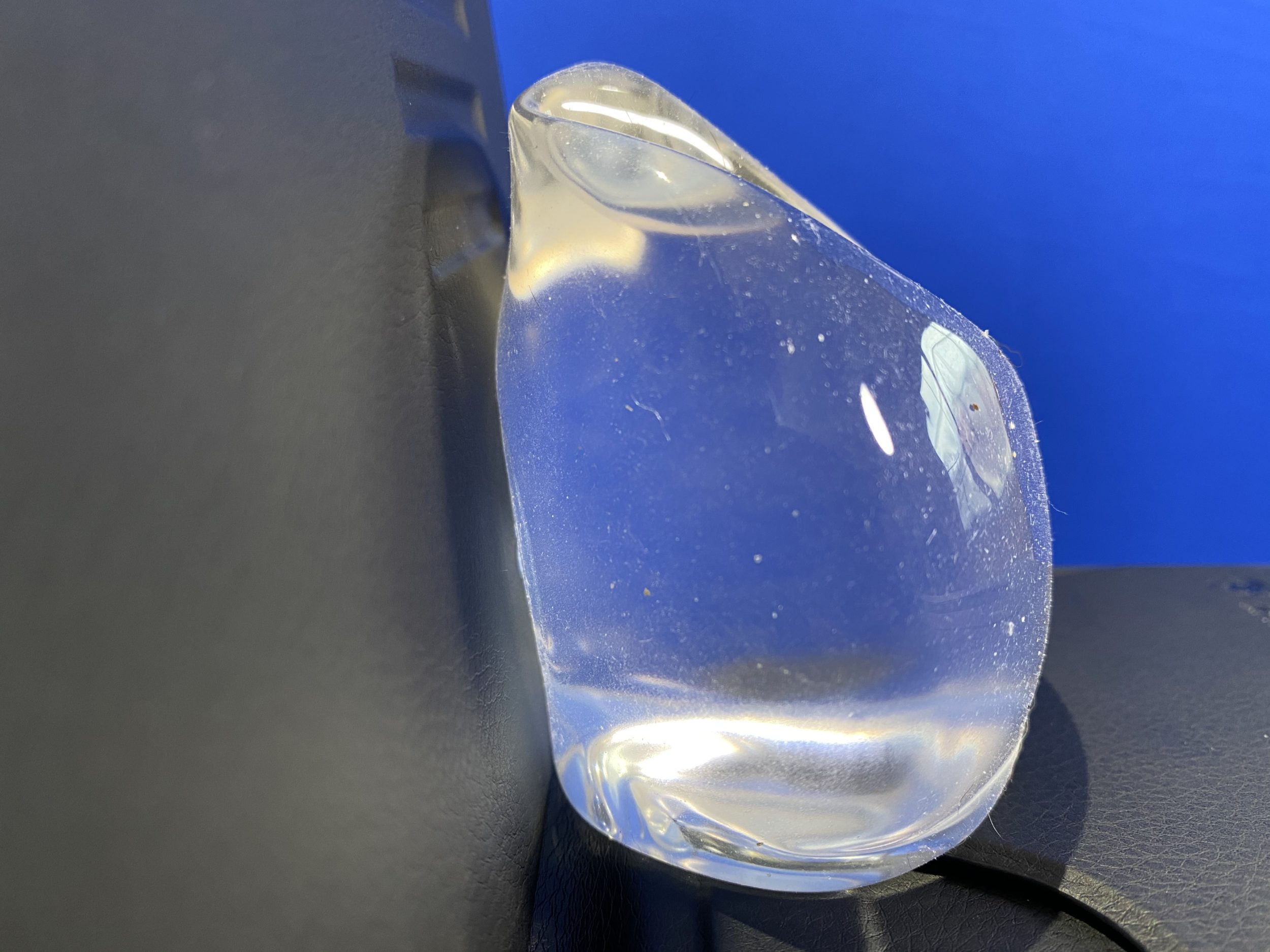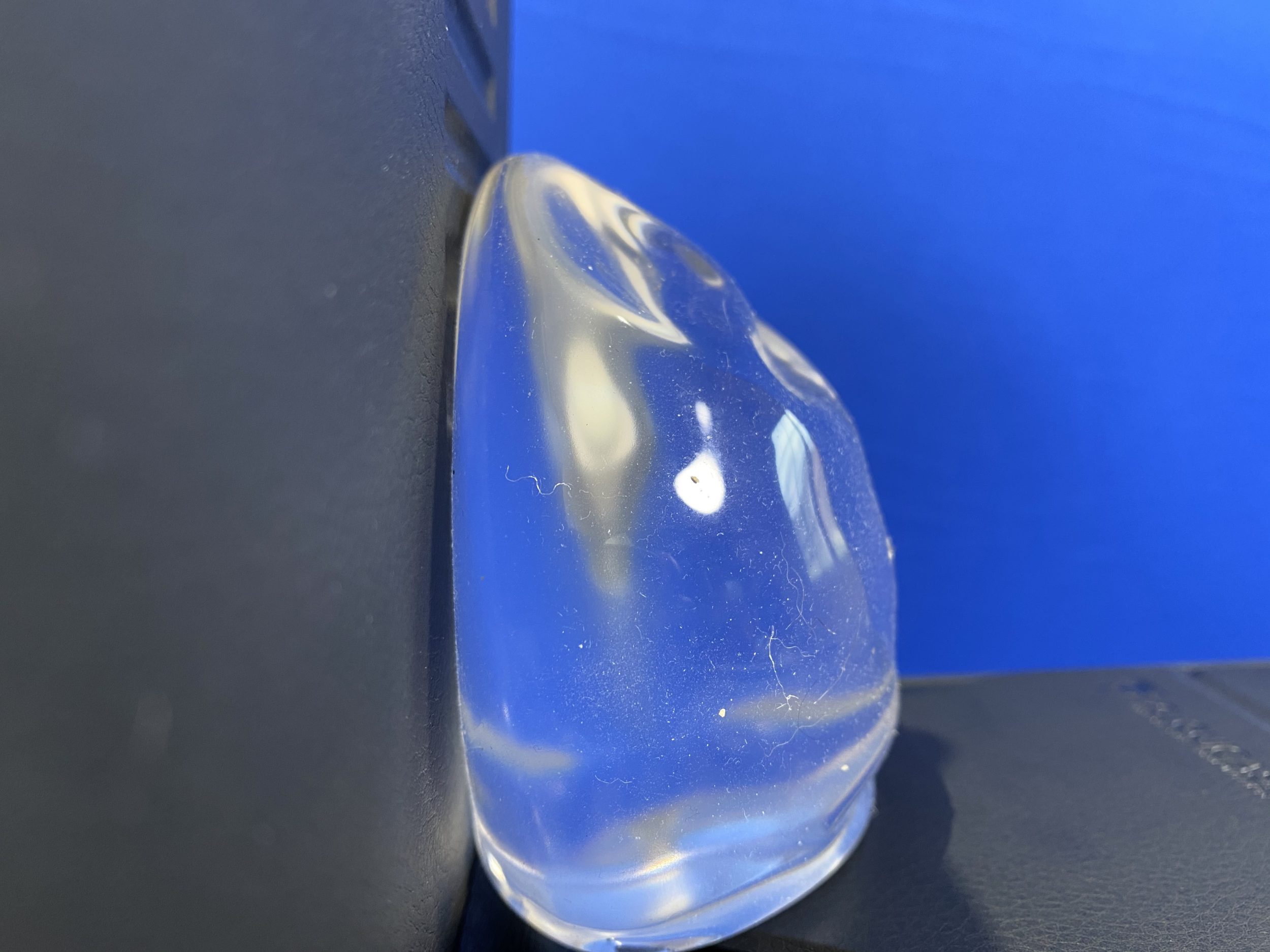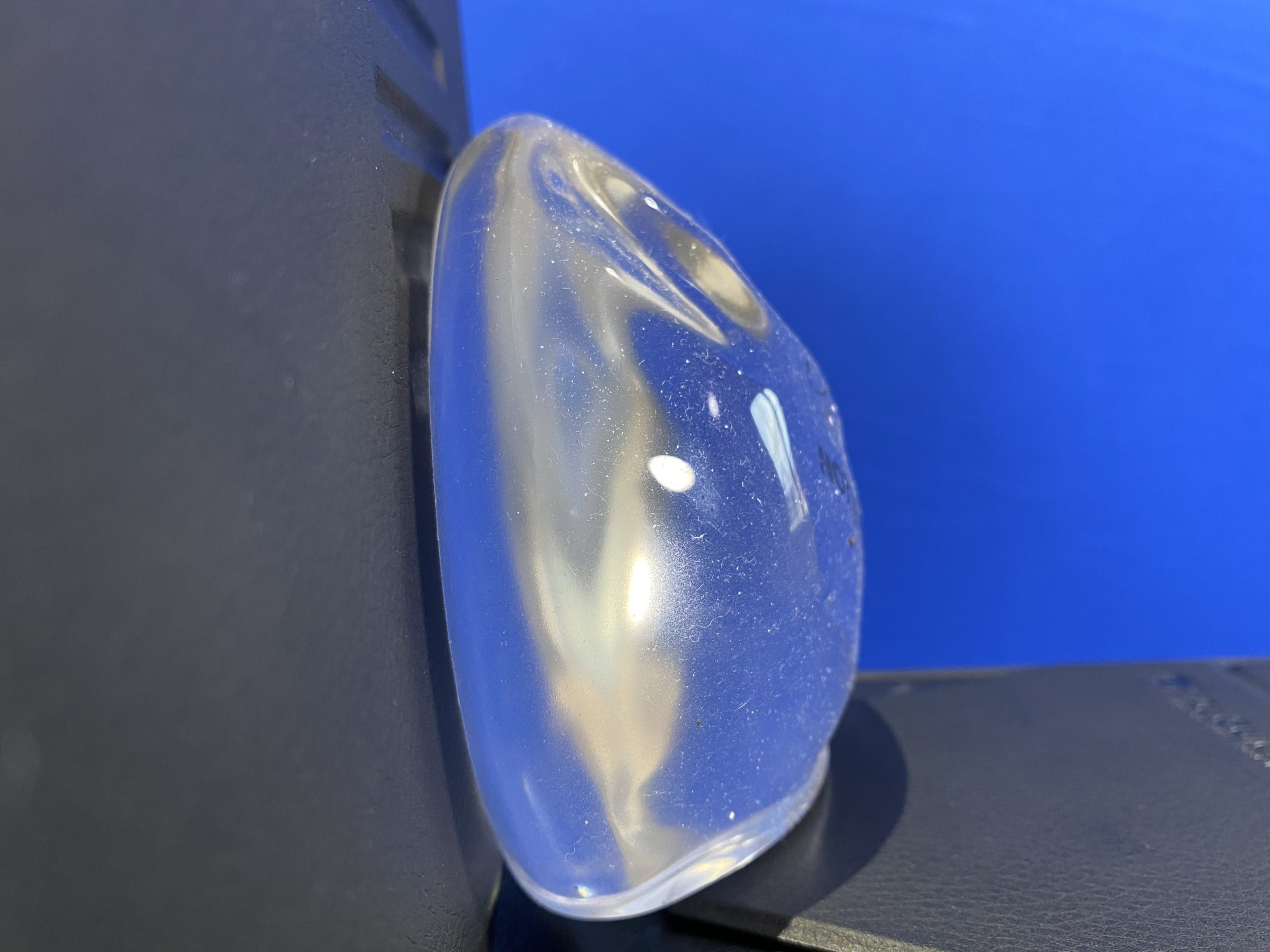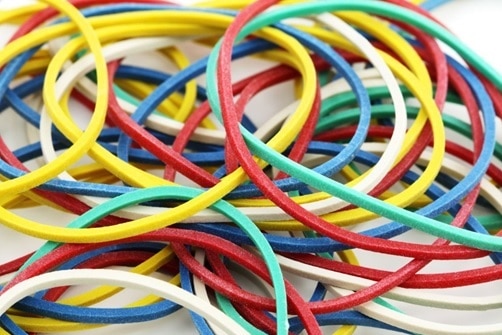Isn’t Silicone Just “Silicone”
The answer is categorically “no.” Silicone is a gel, and there are several different formulations of silicone gel. Having an understanding of the basic properties of silicone gel is essential for the surgeon, and helpful for the patient. Why is this so important? It is important because the mechanical properties of both the silicone gel AND the silicone shell (the bag containing the silicone gel) will determine how soft or firm the implant is, how well it holds its shape and the likelihood of rippling. There are other implant characteristics that are predicated upon the mechanical characteristics of the silicone gel, and these will be discussed later.
The rest of this section deals with the mechanical properties of the silicone gel. This is more of a discussion on materials science, which may not appeal to some patients, which is totally OK. As long as your surgeon has a thorough understanding of this material, then he/she can better counsel and advise you as to which implants will give you the results you are looking for.
As I studied biomedical engineering as an undergraduate, I find this interesting and have prepared detailed presentations on this for my colleagues. If you are not interested in this material, please skip to the next topic: Shapes, surface textures and profiles. If you visit any of the breast implant manufacturer’s websites, you may find various claims about this topic. On this webpage, I try to distill the science into lay terms so everyone can understand it.
Cohesivity: Let’s start with the basic premise for silicone gel implants: cohesivity. This is the term that the implant manufacturers love to talk about. Cohesiveness is a measure of how well like molecules stick together. This is the opposite of adhesion which is a measure of how well unlike molecules stick together. Gluing two objects together is an example of this. An adhesive (the glue) is dissimilar to the material it is applied to. Saline (salt water) is minimally cohesive. If you pour it onto a flat surface, its molecules scatter all over the place. There is no tendency for all the saline molecules to stay together. The saline will form droplets along the flat surface. The droplets are held together by something called “surface tension”, which is the resistance to deformation when a force is applied. If you touch the droplets, they easily deform. Now let’s look at silicone gel. Pour it onto a flat surface, it sticks together. Touch it with your finger, it deforms somewhat, but when you release your finger, the glop of gel persists, for the most part unchanged. This is because silicone gel is more cohesive than saline.
An easy way to understand cohesivity is to think of it as the ability of a MATERIAL (the silicone gel) to resist a change in shape.
Is cohesivity (or cohesiveness) a good thing? Yes, it is. The more cohesive the implant (all other factors being the same), the better the implant will hold its shape. That brings us now to another term, Form Stability.
Form stability describes the ability of an IMPLANT (the silicone gel contained within its silicone shell) to maintain its shape. Form stability is determined by several factors:
- The cohesive properties of the silicone gel now constrained within a silicone "shell" or bag.
- The proportion of how "filled" the shell is. Earlier versions of silicone gel implants were underfilled, newer versions are more filled. (Motiva implants are 100% filled which is most desirable).
- The elasticity of the implant shell.
- How well matched the elasticity of the shell is to the silicone gel contained inside. If they are well matched, the gel will not move inside the shell and the implant will better hold its shape. (Motiva implants have matched gel-shell elasticity and this creates the "Monobloc®" form stable property).
When an implant is lying on a table flat, they all hold their shape. It is when the implant is positioned upright, as it is when inside a breast in an upright patient, the upper portion collapses when the implant is not form stable. The more form stability, the better the implant will hold its shape. There is one caveat here. Is too much cohesiveness a bad thing. Again, the answer is “yes”. The more cohesive, the more the molecules want to stay together and resist deformation, and therefore the gel is more “firm”. So, more cohesive, more firm. This is a very basic, and only partially accurate explanation. Solids have more cohesiveness than gels. Solids are much more firm than gels. So as the cohesiveness of a gel increases, so does the firmness. The idea is to have enough cohesiveness to retain shape, yet not feel too firm. That is the “sweet spot”. There are several other factors to consider in addition to cohesiveness. To learn more about what makes the different silicone gels look and feel differently, continue reading below.



As you can see, the implant on the far left (Allergan Natrelle "Responsive" implant) is the least cohesive, and when upright, the upper portion, called the “upper pole” collapses. The one on the far right (Allergan Natrelle "Cohesive" implant) is the most cohesive, and this implant retains its shape the greatest of the three. The implant in the middle (Allergan Natrelle "Soft Touch" implant) has a cohesiveness that falls in between the other two implants.
Some implant manufacturers and surgeons will talk incessantly about "Cohesiveness" as if it is the only parameter that you need to know about with regard to influencing an implants softness and ability to hold its shape. Unfortunately, that could not be further from the truth!
Viscosity and Elasticity: If you are really fascinated by this topic, let me go just a little further. I will introduce two other concepts – viscosity and elasticity.
Viscosity is the resistance a gel has while under stress from a deforming force. Let’s look at a few examples of this that everyone is familiar with. Heinz ketchup. Crest toothpaste and Aunt Jemima pancake syrup. I’ve used all three of these products. The latter is no longer on my diet, but you will soon get the point. These are all “gels.” A gel is a solid that will deform when an external force or forces are applied. The external forces in all these cases is 1. squeezing the container and 2. gravity.
Pour Heinz ketchup – the advertisements for it exclaim “it’s slow good!”. Watch the 1967 ad below which explains the difference in the viscosity of Heinz ketchup versus other brands.
What is happening is that the molecules of the ketchup (or silicone gel) are moving in sheets one on top of another as the force of gravity is acting to pull it out of the bottle, along with the internal pressure (another force) inside the bottle pushing the ketchup out. There is internal friction as these sheets of molecules move against one another. The degree of friction determines how easily the sheets of molecules can move. The more friction, the less easily there is motion and the more force is needed to these sheets of molecules. In other words, more force is required to deform, or change the shape of the gel – whether it be ketchup or silicone gel. The viscosity essentially determines how easily the gel, in this case ketchup, will change its shape from that while it exists within the bottle, to the opening of the bottle.
So both cohesivity and viscosity affect the ability of a gel to change shape. Cohesivity relates to the tendency of the molecules sticking together and viscosity relates to internal friction as sheets of molecules lie against one another.
The other property I wish to introduce is elasticity. This is the tendency for an object, when deformed by an external force, to return to its original shape. A rubber band is an example of this. If you stretch a rubber band, upon letting go, the rubber band goes back to the exact shape it had before you stretched it. How quickly it returns to that shape will vary among different materials, including silicone gels.

So we now have three properties, cohesivity, viscosity and elasticity, that vary among different gels. The more viscous the gel, the softer your breast will feel. So, a high viscosity is a desirable property. The more elastic the gel, the quicker the implant will return to its original shape. A high elasticity is also a desirable property.
There is also another property, called viscoelasticity, which is a combination of the viscosity and elasticity. I can best explain it this way: When speaking of elasticity alone, when you apply a constant force to deform the gel, there is a certain corresponding fixed amount of deformation that is measurable. It is a linear relationship. When considering viscoelasticity, when you apply a force, the amount of deformation occurs in a two fold manner. First, the elastic component results in a deformation proportional to the amount of force applied. Then the viscous component comes into play. With no additional force applied, the amount of deformation increases further, gradually with the passage of time. This is an extremely important parameter. It is the additional change in deformation that occurs with time that gives the perception of “softness.’ A memory gel mattress is an excellent example of this phenomena. When you lie on it, your body weight compresses the mattress a certain amount due to the elastic component. Then you continue to sink further into the mattress due to the viscous component.
Aside from the size, what characteristics of their augmented breasts are my patients most concerned about? Shape and Softness. We addressed shape with cohesiveness, and softness with viscoelasticity.
There are other parameters that also come into play as well, such as the elasticity of the implant shell, the adherence of the shell (the silicone bag containing the gel) to the gel contained therein, properties such as elastic recovery (how fast a deformed material will return to its normal shape once a deforming force is removed), and energy absorption (the amount of energy expended by deforming the gel. If the elasticity of the shell is matched to that of the gel (ie Motiva "Monobloc®"), and there is good adherence of the shell to the gel, then the shell and the gel will tend to move together in unison, reducing or even totally eliminating rippling and improving form stability (preservation of upper breast shape). If the gel has a high viscoelasticity, then the implant will also be soft as well.
What is my definition of the perfect implant? The perfect implant has a high enough cohesivity to maintain shape, a high viscoelasticity to be soft, a shell matched in elasticity to the gel contained therein, and enough adherence between the shell and the gel to promote them to move in unison, preventing discordant currents of motion of the gel itself. These discordant currents of motion ("eddy currents" can result in "hydraulic shock", also known as a "waterhammer effect" where the implant gel actually moves and bangs against the lower part of the breast, causing undue stretching of the lower breast tissue over time, with subsequent loss of upper breast fullness as more of the implant gel moves into the lower breast. The Motiva implant is currently what I believe to be the implant that most resembles what I consider to have the most ideal qualities. In the below video I explain how the Motiva silicone gel is different from that found in other brands of silicone gel breast implants.
The last quality of an implant that I think is important is how the breast itself moves and changes shape with change in position and motion of the body itself. Below is a wonderful video that depicts this using the Motiva round and ergonomix implants. Both the silicone gel and the silicone shell are different in these two implants, giving each one a unique set of behavioural properties. Some patients prefer the round and some prefer the ergonomix. They are both outstanding breast implants, but having options is a wonderful thing!
These are the very basics of what makes each silicone gel feel and behave differently. There are some other properties I did not discuss, and they all come together to give the implant its unique characteristics. The main point to understand is that not all silicone gels (and shells) are the same.
Congratulations! You are now an expert in silicone gel implants!!!
Prev Topic: What is the difference between saline and silicone gel implants? »
Next Topic: Shapes, surface textures and profiles »
Topics - What Implant Type Do I Need
Sections – Five Key Decisions You Need To Make
Chapters – Breast Augmentation Guide
- Intro to Breast Augmentation
- Motiva Breast Implants
- Five key decisions you need to make
- One-Day Recovery Breast Augmentation
- Anesthesia – General, Sedation or Local?
- Breast Lift (Mastopexy) with/without Implants or Fat
- What else should I know about breast augmentation?
- Important Things to Consider When You Decide to Move Forward With Breast Augmentation
- Revision of breast augmentation
- ALCL and Breast Implant Illness


